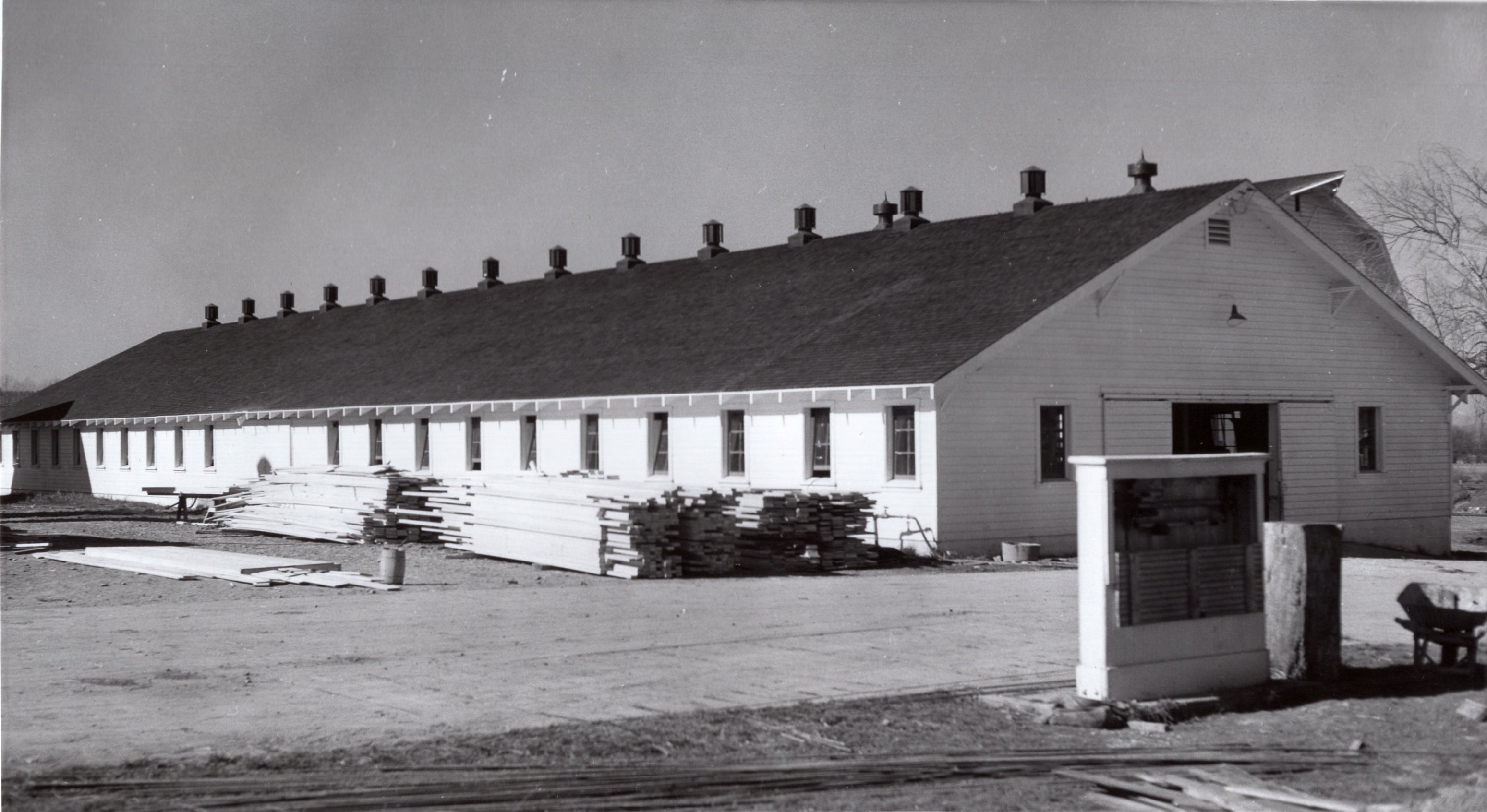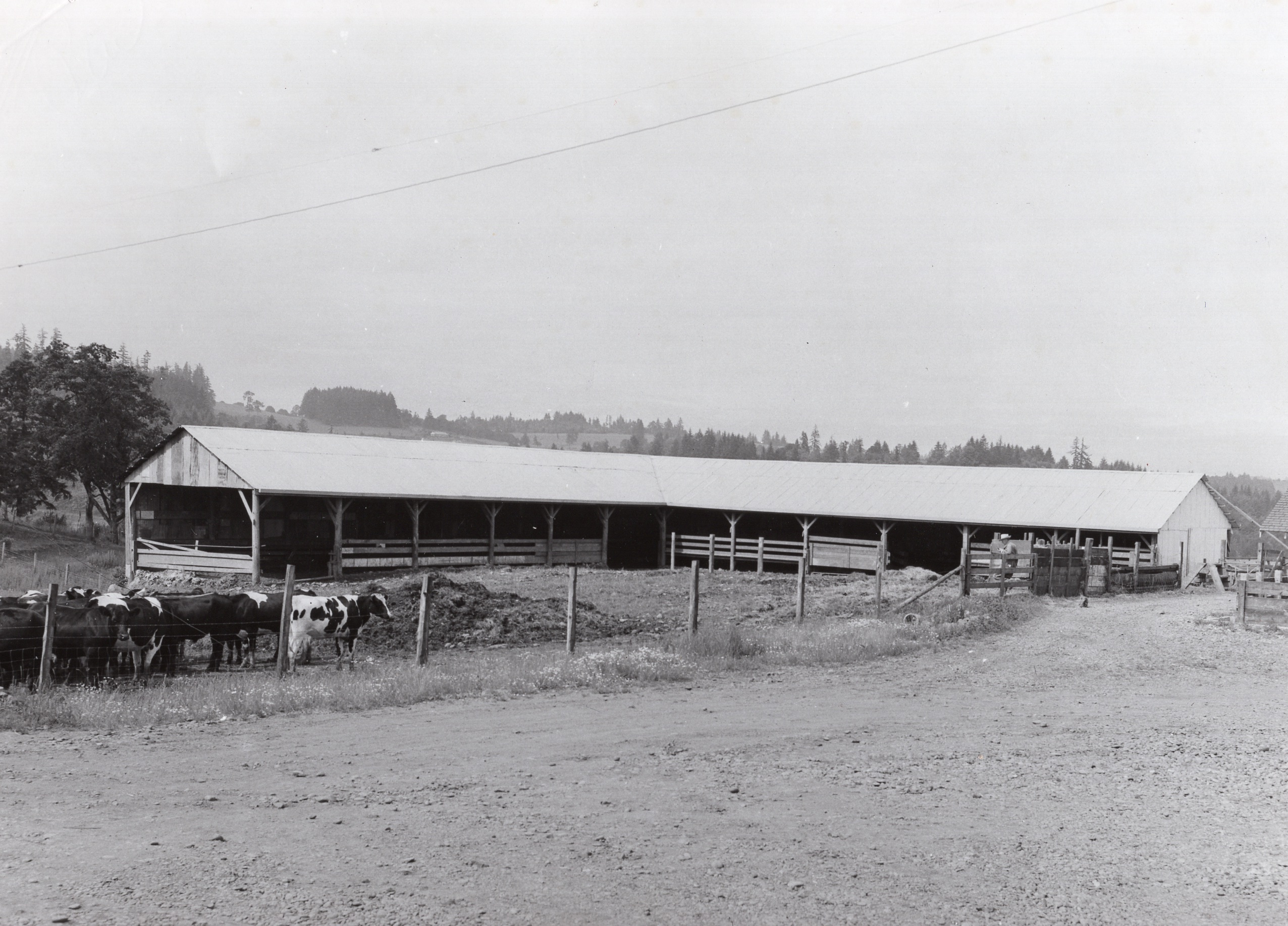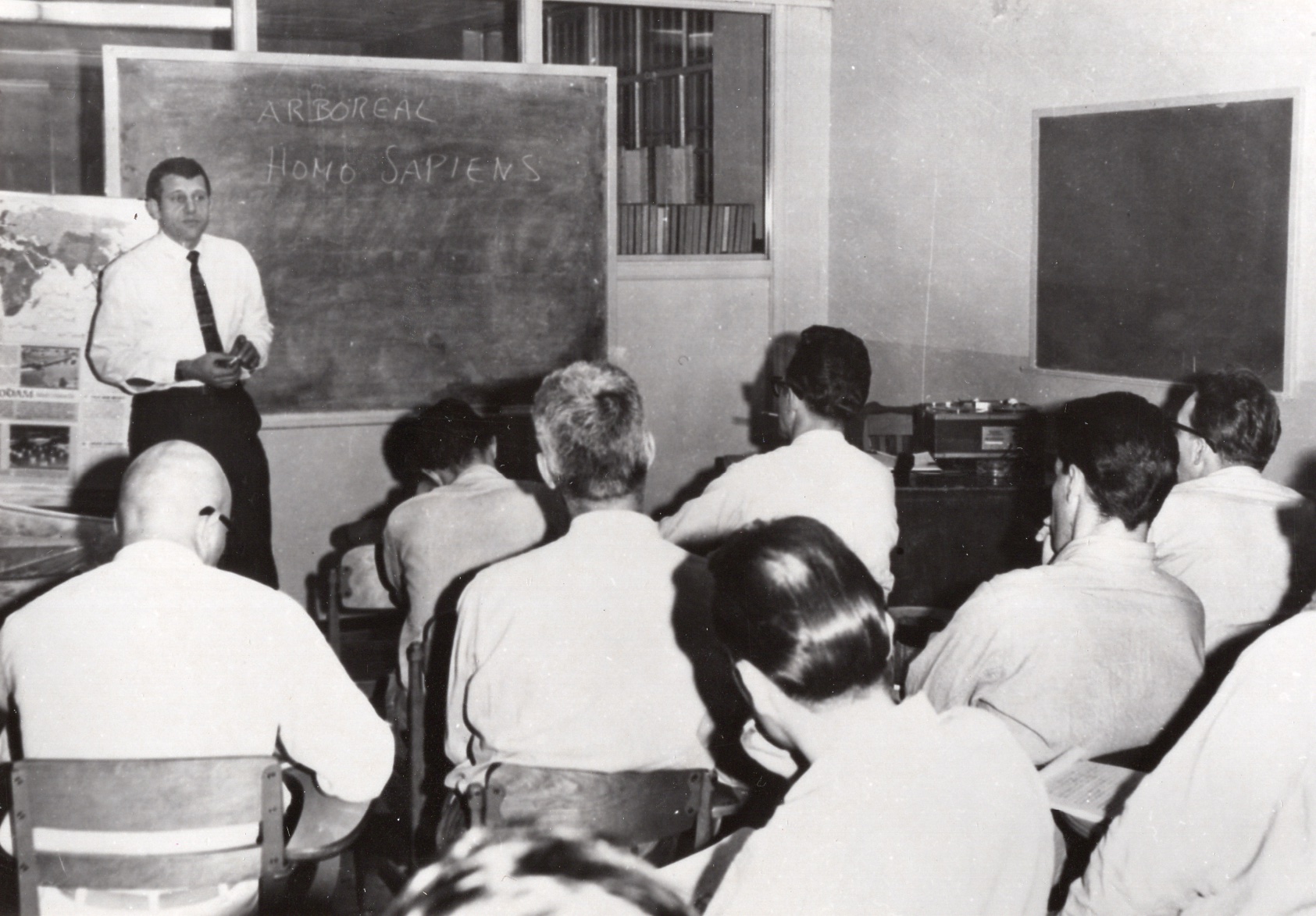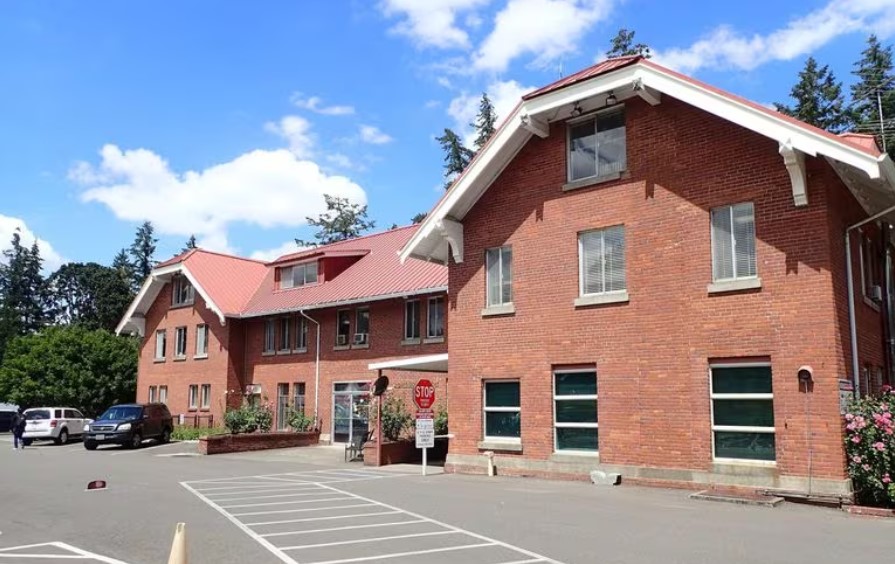The Mill Creek Correctional Facility, located on Turner Road southeast of Salem, has had a layered history of institutional use. The Oregon State Reform School operated on the site first, from 1891 to 1929, followed by the Farm Annex of the Oregon State Penitentiary from 1929 to 1990. Renamed the Mill Creek Correctional Facility in 1990, farm operations were phased out until the facility permanently closed its doors in 2021, when Governor Kate Brown sought to redirect its operating funds to programs that supported housing, behavioral health, and substance disorder treatment.
The Oregon State Reform School (renamed the Oregon State Training School for Boys in 1911) was constructed in 1891 on a hill southwest of Salem. Juvenile courts would not be established in Oregon until 1907, and the school was an attempt to provide a correctional institution for boys between the ages of eight and twenty-one. The boys received agricultural and industrial training on the 600-acre campus, which featured a building constructed of bricks manufactured at the Oregon State Penitentiary. Beginning in 1926, because of overcrowding, most of the boys at the school were moved to the newly built Woodland School for Boys (now called the MacLaren Youth Correctional Facility). The few older boys left behind were eventually transitioned to other facilities. In 1929, a fire destroyed the original brick school building.
In moving the Training School to Woodburn, an opportunity arose for the Oregon Board of Control to create an annex of the Oregon State Penitentiary that could focus on farming. The Farm Annex was both a rehabilitation tool and a way to offset food costs at the penitentiary and the Oregon State Tuberculosis Hospital. The Training School had left behind farming equipment and agricultural facilities, including a milking parlor, and the state government constructed new buildings to expand capacity for dairying, hog raising, and poultry farming. In 1941, a dormitory designed by Salem-based architect Frank H. Struble was constructed to provide on-site housing, so men in custody who worked at the Farm Annex no longer had to be shuttled between the farm and the penitentiary. The dormitory accommodated over two hundred adults. The Annex was a minimum-security facility, and the property as a whole was never enclosed by a fence. Escape was common.
During the 1950s and 1960s, the Farm Annex was expanded and modernized in response to the reorganization, consolidation, or termination of other farming operations at Oregon State institutions. In 1956, dairy operations were modernized to reduce bacteria in distributed milk, for example, and efficient milking equipment was installed to increase production. An expansion of hog facilities in the 1960s increased operations by 50 percent. The Farm Annex grew to over 2,000 acres and became one of the largest farms in Marion County.
During the post-World War II era, private agricultural operations became more specialized, mechanized, and costly, and farming was increasingly viewed as an outdated form of rehabilitation, incompatible with the interests and experiences of incarcerated individuals. Other institutional farms in the U.S. closed, but Farm Annex operations continued. The Annex’s longevity was partly due to the farm managers’ ability to shift operations based on demand and to keep pace with changes in the agricultural industry.
During the 1970s, however, the Farm Annex was plagued by mismanagement and irregularities. Hog operations ceased in 1975 due to high production costs and disease, and poultry farming was phased out. Beef and dairy production became the primary focus. Then a 1988–1989 audit found that several cows were unaccounted for and cattle had been purchased at inflated prices, sparking debates over staff accountability and the future of the farm.
By 1990, the Farm Annex had been renamed the Mill Creek Correctional Facility (MCCF) to acknowledge the minimum-security facility’s distinction from the Oregon State Penitentiary. Although limited dairy operations continued, the scathing audit and a 1992 citation for allowing livestock sewage to flow into Mill Creek created challenges. When Oregon Ballot Measure 17 passed in 1994—mandating that state prison adults work or receive training for forty hours a week—MCCF farm managers saw an opportunity to breathe new life into the operation. Inmates processed milk from a McMinnville-area farmers’ cooperative for use by other state institutions until 1998, when growing deficits forced the dairy to close.
All state-owned farming activity at the Farm Annex was halted by 2000. A private rancher leased the land, and the state closed the Mill Creek Correctional Facility in 2021. The adults in custody were moved to other minimum-security facilities.
-
![Board of Control: Photographs, 1925-1966.]()
Old creamerly in foreground.
Board of Control: Photographs, 1925-1966. Courtesy Oregon State Archives, Salem -
![Board of Control: Photographs, 1925-1966.]()
Annex Administration building.
Board of Control: Photographs, 1925-1966. Courtesy Oregon State Archives, Salem -
![]()
Oregon State Reform School, c. 1910.
Courtesy Berkeley Library, BANC PIC 2017.021:T3:504 -
![Board of Control: Photographs, 1925-1966.]()
-
![Board of Control: Photographs, 1925-1966.]()
-
![]()
Shadows: Special Annex Issue, Oregon Department of Corrections, 1963, cover page.
Courtesy Oregon Department of Corrections, Salem -
![]()
Shadows: Special Annex issue, Oregon Department of Corrections, 1963, p.12.
Courtesy Oregon Department of Corrections, Salem -
![]()
Shadows: Special Annex issue, Oregon Department of Corrections, 1963, p.22.
Courtesy Oregon Department of Corrections, Salem -
![]()
Shadows: Special Annex Issue, Oregon Department of Corrections, 1963, p.35.
Courtesy Oregon Department of Corrections, Salem -
![]()
Shadows: Special Annex Issue, Oregon Department of Corrections, 1963, p.36.
Courtesy Oregon Department of Corrections, Salem -
![Board of Control: Photographs, 1925-1966.]()
New silos located near the new dry stock loafing shed.
Board of Control: Photographs, 1925-1966. Courtesy Oregon State Archives, Salem -
![Board of Control: Photographs, 1925-1966.]()
Greenhouse and tool shed.
Board of Control: Photographs, 1925-1966. Courtesy Oregon State Archives, Salem -
![Board of Control: Photographs, 1925-1966.]()
Farm Superintendent residence.
Board of Control: Photographs, 1925-1966. Courtesy Oregon State Archives, Salem -
![Board of Control: Photographs, 1925-1966.]()
-
![Board of Control: Photographs, 1925-1966.]()
-
![Board of Control: Photographs, 1925-1966.]()
Hog Fattening Pens at the Farm Annex.
Board of Control: Photographs, 1925-1966. Courtesy Oregon State Archives, Salem -
![Ben Maxwell, photographer.]()
Oregon State Penitentiary Annex dormitory, 1941.
Ben Maxwell, photographer. Courtesy Salem Public Library Historic Photograph Collections, Salem Public Library, Salem, Oregon -
![Board of Control: Photographs, 1925-1966.]()
Classroom at the annex.
Board of Control: Photographs, 1925-1966. Courtesy Oregon State Archives, Salem -
![Board of Control: Photographs, 1925-1966.]()
Related Entries
-
![Hillcrest Youth Correctional Facility]()
Hillcrest Youth Correctional Facility
The Hillcrest Youth Correctional Facility in Salem was a prison for Ore…
-
![MacLaren Youth Correctional Facility]()
MacLaren Youth Correctional Facility
The MacLaren Youth Correctional Facility in Woodburn is one of five cor…
-
![Oregon State Penitentiary]()
Oregon State Penitentiary
The Oregon State Penitentiary, Oregon's only maximum-security prison, s…
Related Historical Records
Map This on the Oregon History WayFinder
The Oregon History Wayfinder is an interactive map that identifies significant places, people, and events in Oregon history.
Further Reading
"History of Juvenile Justice in Oregon." Oregon Youth Authority (OYA), State of Oregon.
Halvorson, Gary D. Oregon Department of Corrections Agency History. Oregon Department of Corrections, State Library of Oregon, Salem.
Marsh, F.H. "State Reform School." Portland Morning Oregonian, December 3, 1875, p. 2.
Warren, William. "Prison Farm East of City Raises Prize products." Salem Capital Journal, August 18, 1949, p. 4.
Steusloff, Claude. "Prison Annex Comprises One of County’s Largest Farms: Production Line Milker on State Prison Farm." Salem Capital Journal, 1956.
Sprague, Charles A. "It Seems to Me" (editorial). Salem Statesman Journal, June 19, 1958, p. 1-4.
"Hogs are Out of the Pen." Salem Capital Journal, October 31, 1975, p. 16.
Carroll, Jill S. "To Keep Pace with the Times Farm Annex Switches Gears." Salem Capital Journal, December 17, 1978, p. 9B.
"Auditors Detail Irregularities: Prison Issues Include Records, Missing Cattle." Salem Statesman Journal, June 15, 1990. p. 2A.
Gustafson, Alan. "Officials Split on Farm Annex: Corrects Chief, Courtney at Odds." Salem Statesman Journal, June 19, 1990, p. 1A-2A.
Steves, David. "Prison Farm Tries to Shake Polluter Image." Salem Statesman Journal, February 9, 1992, p. 3D.
"Problems Imperil State Prison Farm: Corrections Showcase Becomes Tarnished." Salem Statesman Journal, November 15, 1998, p. 1A, 6A.






















